Conservation Biology and Restoration Ecology
Why do we care about biodiversity? Some theorized it is because we have a sense of connection to nature and other forms of life (Harvard biologist E. O. Wilson calls it “biophilia”). Many people share a moral belief that other species have an inherent right to life. And in a country like ours, our dependence on the services provided by our environment gives us practical reasons for preserving biodiversity.
Levels of Biodiversity
Biodiversity encompasses more than one species. It includes the diversities of ecosystems, of species, and of their genetic diversity. We will examine each level of diversity to see what we stand to lose if their decline is not stopped.
Ecosystem Diversity
The world’s natural ecosystems are rapidly disappearing. As human populations encroach on these spaces, we also remove the essential services these natural ecosystems offer. Water purification is one service provided free of charge as water moves through our forests, being removed of pollutants and sediments as they flow. Whether taken from surface waters or groundwater, the drinking water supplied by public water systems has passed through this natural filtration process.

Aquatic ecosystems are also threatened. Most of the world’s coral reefs are impacted by human activities: some are physically destroyed; others are indirectly affected due to our species’ impact on climate and global systems. In an archipelago like the Philippines, our fishing communities’ lives are practically dependent on the productivity of the seas. Basically, when ecosystems are lost, we also affect the populations of species that make up those communities.
Species Diversity
A species may disappear from one local ecosystem but remain in others. Ecologists refer to the loss of a single population of species as extirpation and while the decline in population size is a signal that the species is in trouble, it is still possible to save it. When all populations of a species have disappeared, we will have an irreversible situation known as extinction.
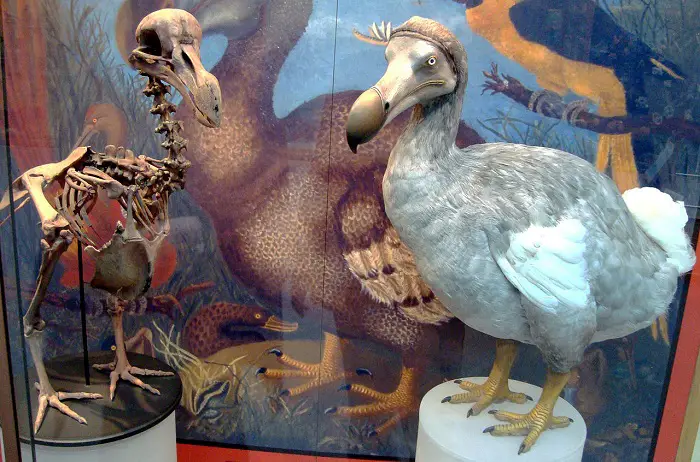
Because different populations interact and establish a connection with one another, the loss of one species can have a negative impact on the entire ecosystem. We are also uncertain of how many species there are so it is also difficult to determine the rate at which species are lost. And when species are lost, their genetic information, the material required to evolve and adapt to their environment is also lost.
Genetic Diversity
Genetic diversity between and among populations of species provides material that will allow them to adapt to any future environmental changes. If local populations disappear, so too are the genetic resources required for the species to persist. If population size falls, you might have remaining individuals of the species inbreeding with each other and if history has taught us something, inbreeding often has complications that come along with it.
The enormous genetic diversity of all organisms benefits people. We have been domesticating plants and animals for food consumption but because we narrowed their genetic diversity, we often leave them vulnerable to pathogens. That is why we might see in the news the extent of damage pests or specific diseases can do to a large area of a crop field, or we observe that some certain breeds of animals have specific diseases that are absent in others.
Now that we have insight into the nature and value of biodiversity, the next topic will examine some causes for its decline.
Human Impacts on Biodiversity
We have grown into large numbers as a species. We have supported and maintained this growth by using more effective technologies to capture or produce food, advance our medical knowledge to prolong lives, extract resources from the environment, and build and industrialize our societies among others.
In industrialized countries, however, the resources consumed exceed the basic requirements for food and shelter so it should come as no surprise that most human activities are largely responsible for the predicament and decline in biodiversity. The following are major threats to biodiversity:
1. Habitat Loss
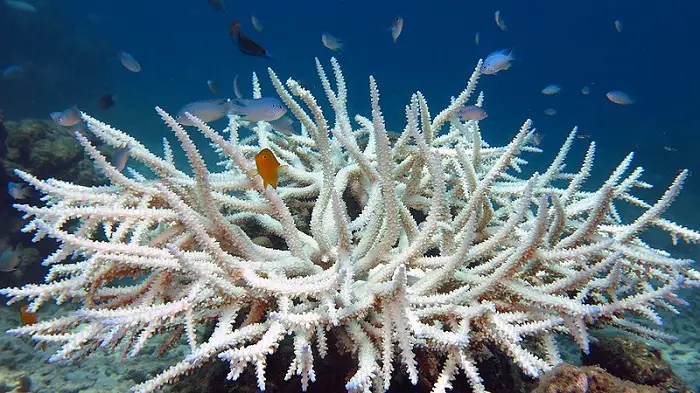
Human alteration of habitats is the single greatest threat to biodiversity throughout the biosphere. Agriculture, urban development, and environmental pollution are some of the activities that brought massive destruction of habitats. Deforestation also continues at a blistering pace in tropical and coniferous forests.
The natural courses of most of the world’s major rivers have been changed. Worldwide dam construction as flood control, source of power, drinking water, and irrigation has also damaged river and wetland ecosystems. Aquatic habitats such as estuaries have been overrun by commercial and residential development. The loss of marine habitat is severe, especially in coastal areas and coral reefs.
2. Invasive Species
Invasive species disrupt communities by competing with, preying on, or parasitizing native species. Because no or a lack of interspecific interaction will keep the invading population in check, non-native species may proliferate and become invasive in the process.
A newly arrived species also introduces an unfamiliar biotic factor to the environment of the native species. Native species become very vulnerable when a new species poses an unprecedented threat.
Invasive species are introduced to the area as released exotic pets. They can also be stowaways in transportation or imported from other areas to be utilized for specific actions such as being used as biological control agents of pests and the like. So yes, I’ll have to mention the elephant in the room that sometimes, the exotic plant or wildlife collecting hobby we like, if not handled properly, can be menacing to the biodiversity of your area.
3. Overharvesting
The overexploitation of resources, both living and nonliving, is harmful to biodiversity. We are more concerned with the living resources in this topic. If we overharvest wildlife resources at rates that are replenished, they are more likely to be extirpated in the area. You might also be familiar with the illegal wildlife trade where some rare animals are targeted (poaching, trophy hunting, etc.) for their value.
Aquatic species are also overexploited. Illegal fishing methods are harmful to both aquatic ecosystems and possibly to consumers of that seafood. There is also an increasing trend where commercial fishers are harvesting fish from deeper depths to obtain hauls that are comparable with previous decades (You know when fish are more abundant since there is less competition with other fishers and there are fewer mouths to feed due to population sizes then).
4. Pollution
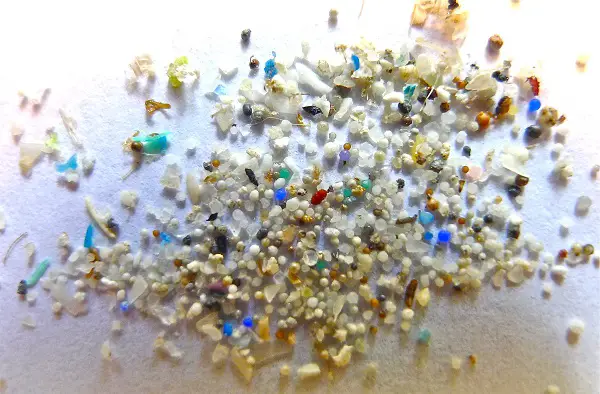
Land pollution, water pollution, air pollution, you name it. Pollutants released by human activities can have localized or global effects. Because water circulates the surface of the planet, it brings with it pollutants from one face of the planet to the other or to nook and crannies in continents or islands. It can also flush pollutants on land and introduce them into the oceans.
The ozone layer is also affected because of our gas emissions. This layer in the atmosphere helps prevent extreme amounts of ultraviolet light and radiation from directly coming into contact with living beings on the face of the Earth and scientists noted that it was thinning. The thinning of the layer has serious implications for life on Earth not only because of skin cancers but also because our plants and other autotrophs have to be subjected to tolerable wavelengths of light.
Many toxins are also incorporated into the food chains and webs of our ecosystems. In a process called biological magnification, organisms at higher trophic levels accumulate toxins from ingesting contaminated food.
More recently, scientists recognized microplastics as pollutants to many of our aquatic ecosystems. Because plastic is very durable, it can persist for a very, very, very long time and even if it breaks into smaller pieces, small plastic molecules which can not be seen with the naked eye could still persist in the environment. Since it is more recent, scientists are trying to understand better how this type of pollutant affects many organisms, not just in the aquatic environment.
5. Climate Change
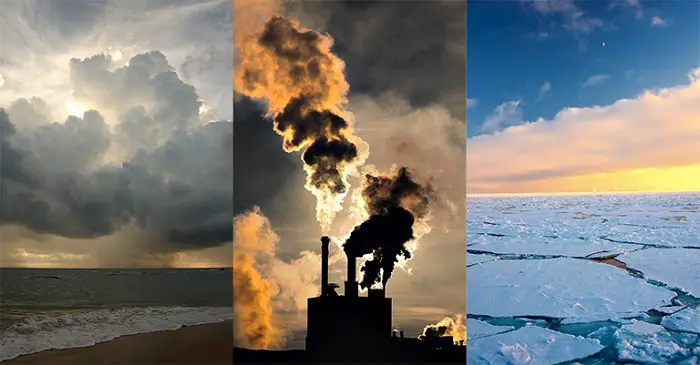
Because climate shapes and affects life on Earth, any factor that would drastically change the climate at a rate exceeding that which species would be able to adapt to is alarming for biodiversity. A trend is seen by scientists where global temperatures are rising, aptly called global warming. It came from different factors but most of it can be attributed to greenhouse gas emissions.
During the industrial revolution, more fossil fuels are burned, releasing the carbon stored in these resources back to the atmosphere. Because of carbon’s properties, it tends to trap heat and this would result in increased temperatures. You have to consider that the Sun isn’t the only source of heat on Earth but that the Earth itself, as a planet, also produces heat because of its molten core and inner layers.
Already, cooler regions and ecosystems are starting to thaw and this is already bad for our friends which are adapted to live in extremely cold conditions (I’m looking at you cuddly polar bears, penguins, and arctic foxes). Although climate change is a boon to some organisms, these are usually species that have a negative impact on us people. Mosquitoes tend to thrive in warmer areas, bringing with them many transmittable diseases.
Some organisms have already responded to climate change and this can be attributed to phenotypic plasticity, wherein there is a change in phenotype (expressed traits, features, characteristics) as a response to local environmental conditions. For example, some birds in temperate regions have adapted to the earlier arrival of warm weather in spring by breeding earlier.
Climate change also influences water bodies and the organisms living in them. If you might recall, increasing water temperatures also caused some corals to bleach. This is because some corals respond to stress induced by shifts in temperature by ejecting their associated zooxanthellae, rendering them bleached.
These are just some factors that contribute to the decline of biodiversity but the actions of scientists and concerned citizens are already trying to mitigate and hopefully, avert, the worst-case scenarios different human activities have on the biosphere.
Conserving Biodiversity
As we have learned, many environmental problems we face today are a result of various human disturbances in nature. Ecology is not just useful for telling us how things went wrong, it can also show us different means of finding solutions to these problems and reverse the negative consequences of these different disturbances. And so, we will close the topic on ecology by highlighting some of the applications and fields that stem from different ecological researches.
Conservation Biology is goal-oriented. It seeks to understand and counter the loss of biodiversity. Some conservation biologists focus on protecting populations of threatened species and this requires understanding the behavior and ecological niche of the species. Threats posed by humans are also assessed. With this knowledge, scientists in the field can design, improve, and plan areas that can protect and support the species.
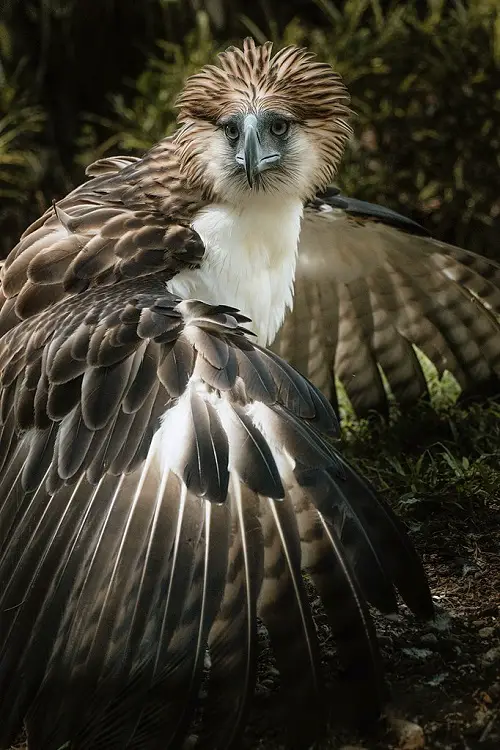
Captive breeding programs are being used for many species with extremely low population numbers. Here in the Philippines, we have set these programs for the Philippine Eagle to boost their population numbers. The species often require a large area and they are more suited to a forest setting. However, because illegal logging practices have caused many forest areas in the country to shrink, their population size has been a concern for many conservationists.
By using a variety of methods, biologists have improved the conservation status of some endangered species, reintroduced species to areas where they had been extirpated, and reversed declining population trends for others. Sadly, we will not be able to save every threatened species. One way to select worthwhile targets is to identify if they are keystone species so that we may help preserve entire communities. In many situations, conservation biologists look beyond individual species and into ecosystems.
Landscape Ecology applies ecological principles to study the structure and dynamics of a collection of ecosystems. Landscapes, as mentioned before, have edges or boundaries that transition between ecosystems. These features are also brimmed with an activity that affects and allows it to have its own communities of organisms. Some organisms thrive in these edges because they may require resources from the adjacent areas. For example, birds may need to nest in the forest, but the adjacent open field may provide food in the form of insects or fleshy fruits in shrubs to those bird species.
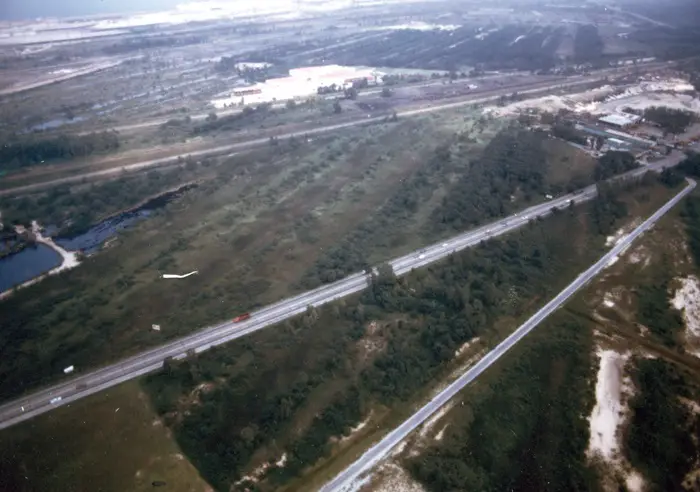
Ecological fragmentation refers to when a natural area is divided into several parts. Because clearing of natural habitats may cause them to fragment or become patchy, a movement corridor or wildlife corridor will allow those fragmented areas to be connected by allowing a narrow strip or series of habitats connecting those otherwise isolated patches.
For example, building bridges or tunnels specifically for animals reduces the amount of roadkill. Corridors can also allow more species to disperse to a wider area and minimize the possibility of inbreeding in declining populations. On the other hand, a corridor is harmful in that it can also facilitate the spread of diseases. The effects of corridors between habitats in a landscape are still being studied and our understanding of them is continuously refined.
In the next topic, we will look at protected areas as a means of protecting threatened species.
Reserves and Protected Areas
Knowledge of population, community, ecosystem, and landscape dynamics are applied in conservation through the form of parks, wilderness areas, and other legally protected nature reserves. Choosing locations for protection often focuses on biodiversity hotspots. A biodiversity hotspot is a relatively small area with numerous endemic species, organisms found nowhere else in the world.
The Philippines is considered a diversity hotspot for marine organisms and is part of an area considered to have the highest concentration of marine plants and animals in the world, called the “Coral Triangle”. Because endemic species are limited to specific areas, they are highly sensitive to habitat degradation. Thus, biodiversity hotspots are also hotspots of extinction and rank high on lists of areas demanding strong global conservation efforts.
Locally, we have the NIPAS (National Integrated Protected Areas System) Act that classifies and administers all designated protected areas in the country. Tubbataha Reef in Palawan is one of the country’s most well-known protected areas.
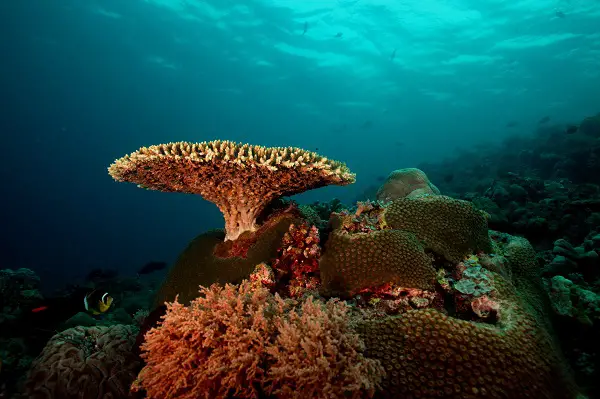
The “hotspot” designation provides opportunities to protect many species in very limited areas; however, it tends to favor the most noticeable organisms such as vertebrates and plants. Invertebrates and microorganisms are often overlooked. Furthermore, the endangerment of species is a global phenomenon, so focusing on hotspots should not detract from conservation efforts in other areas.
One major conservation question is whether it is better to create one large reserve or a group of smaller ones (We, who are familiar with this debate in the field refer to it as SLOSS: “Single Large? Or Several Small?”). But because different species have different requirements, it is not easy to just base it on reserve size or number.
In addition, governments have budgets to keep, and given political and economic realities, it is unlikely that already existing parks will be enlarged, and most new reserves will also be too small. At least two approaches were developed to try to resolve this problem:
- Zoned reserves are extensive regions of the land that includes one or more areas which are undisturbed by humans. The lands surrounding these areas continue to be used to support human population, but they are protected from extensive alteration. This results in the zone becoming buffer zones, or shields, against further intrusion into the undisturbed areas. Because zoned reserves have mixed results in many countries, another approach borne from it that tries to provide a new source of income for the country.
- Ecotourism where you travel to natural areas for tourism and recreation. People experience the biodiversity of the area and as more tourists come, it provides more jobs and revenue to the country. Worldwide, ecotourism has become a multibillion-dollar industry as tourists flock to the world’s remaining natural areas. Whether ecotourism ultimately helps conserve Earth’s biodiversity, however, remains to be seen.
Restoration Ecology and Sustainable Development
Our society has a long history of altering and degrading areas without considering its consequences. But as we gradually come to realize the extent of these consequences, we have sought ways to return areas to their more pristine state. The field of Restoration Ecology uses the different principles of ecology to develop methods to achieve this goal.
One major strategy in the field is bioremediation. It uses living organisms to detoxify polluted ecosystems. These can range from bacteria to plants and researchers have utilized them to detoxify toxins in dumpsites, extract toxic metals from the soil, and ongoing studies are trying to see if they can be used to remove radioactive wastes from nuclear power plants.
Some restoration projects have the broader goal of returning ecosystems to their natural state which may be done through replanting native vegetation, fencing out non-native animals, or removing dams that restrict water flow.

Because there is demand for the different services of ecosystems, there is a danger that some materials we acquire from nature are not replenished and will no longer be available in the future. Although our demands are being met, they are satisfied at the expense of other critical ecosystem services, such as climate regulation and protection against natural disasters. Clearly, our projected state in the future is not that great.
So, the question is: “How can we best manage Earth’s resources to ensure all generations will have an adequate supply of the resources and still have a relatively stable environment?” Many nations, scientific societies, and private foundations have embraced the concept of sustainable development. It aims to meet the needs of people today without hindering the ability of future generations to meet their needs.
Sustainable development doesn’t only depend on research and application of knowledge in ecology, it also requires us to connect the biological sciences with social sciences, economics, and the humanities. Conservation and restoration of biodiversity is only one side of sustainable development; the other key facet is improving the human condition. Public education and political commitment and cooperation between nations are essential to the success of such endeavors.
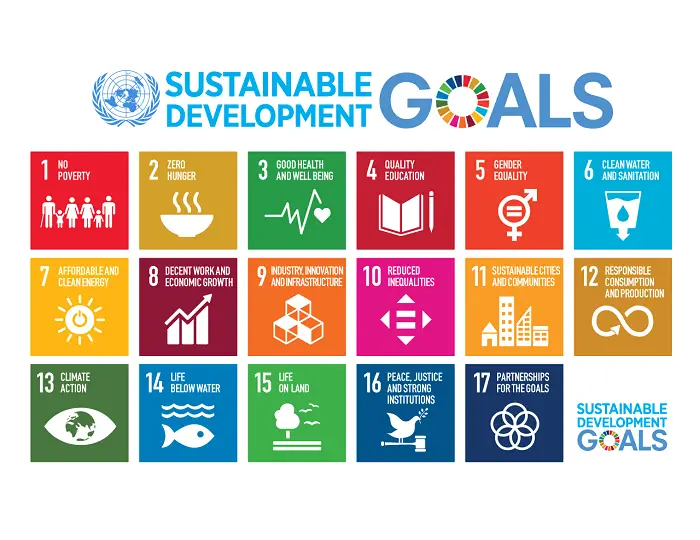
Biology is the scientific expression of the human desire to know nature. We are most likely to save what we appreciate, and we are most likely to appreciate what we understand. By learning about the processes and diversity of life, we also become more aware of our dependence on healthy ecosystems. An awareness of our capability to alter the biosphere and inflict harm on the existence of other species, as well as our own, may help us choose a path towards a sustainable future.
Previous topic: The Biogeochemical Cycles
Return to the main article: The Principles of Ecology
Download Article in PDF Format.
Test Yourself!
1. Practice Questions [PDF Download]
2. Answer Key [PDF Download]
Copyright Notice
All materials contained on this site are protected by the Republic of the Philippines copyright law and may not be reproduced, distributed, transmitted, displayed, published, or broadcast without the prior written permission of filipiknow.net or in the case of third party materials, the owner of that content. You may not alter or remove any trademark, copyright, or other notice from copies of the content. Be warned that we have already reported and helped terminate several websites and YouTube channels for blatantly stealing our content. If you wish to use filipiknow.net content for commercial purposes, such as for content syndication, etc., please contact us at legal(at)filipiknow(dot)net
